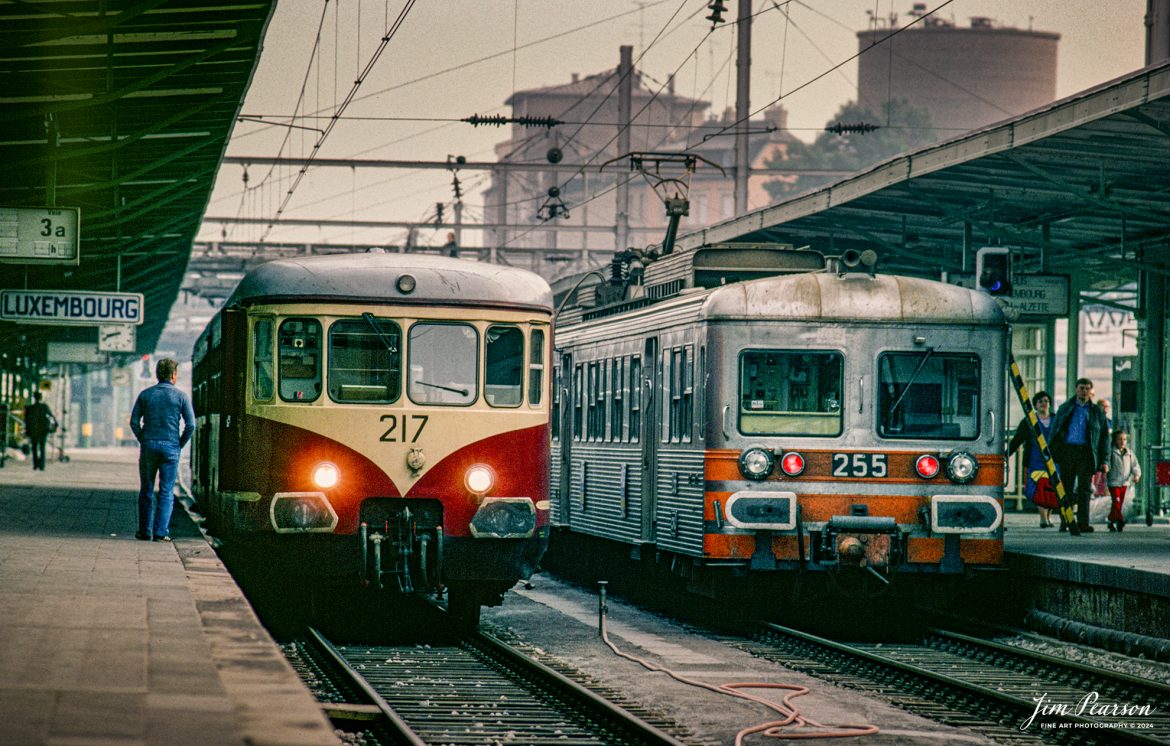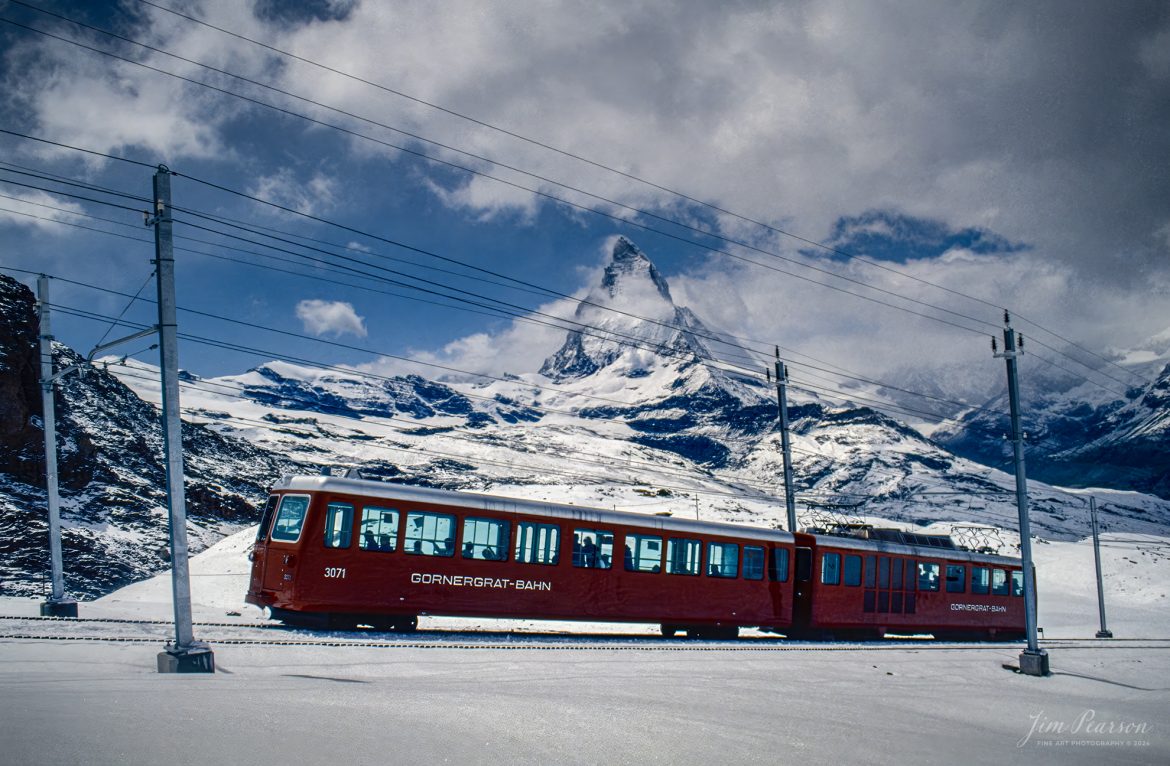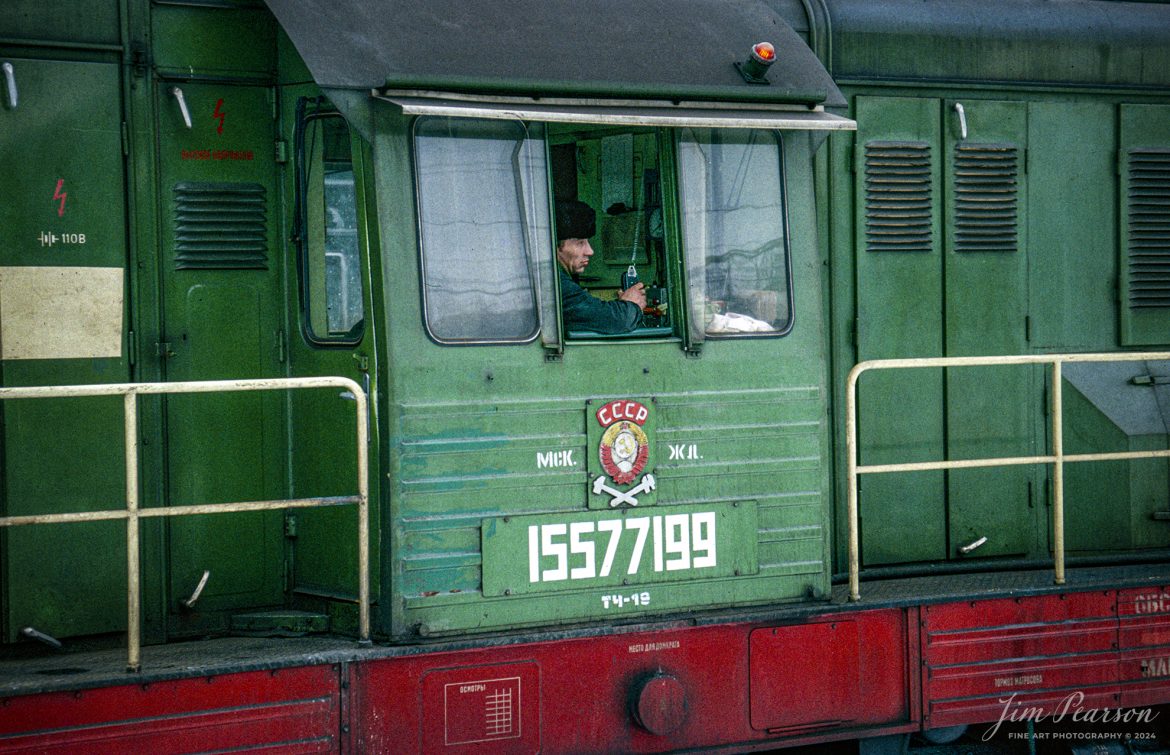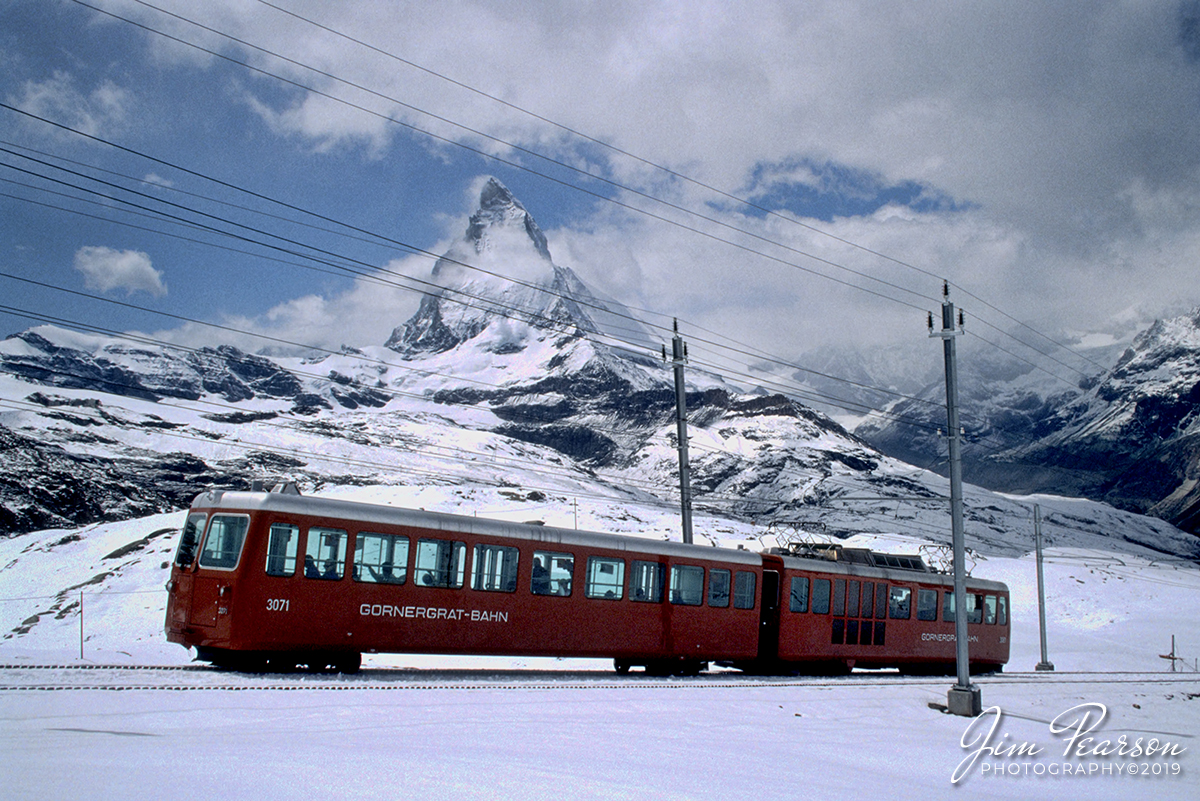Blast From The Past – 1994 – Today’s photo serves a dual purpose. It’s a photo taken during my military days, but is also my daily train photo. This is a mountain rack railway called the Gornergrat-Bahn as it heads up to Gornergrat from Zermatt, Switzerland, passing the Matterhorn in the background.
It was taken during “Operation Deny Flight” which was a North Atlantic Treaty Organization (NATO) operation that began on 12 April 1993 as the enforcement of a United Nations (UN) no-fly zone over Bosnia and Herzegovina.
The United Nations and NATO later expanded the mission of the operation to include providing close air support for UN troops in Bosnia and carrying out coercive air strikes against targets in Bosnia. Twelve NATO members contributed forces to the operation and, by its end on 20 December 1995, NATO pilots had flown 100,420 sorties.
For 6-months of this operation I was the photo editor for a Combat Camera team that worked out of Aviano, Italy covering the operations. On the weekends, our schedules allowed us some time to travel and on one three day weekend I took the train from Italy to Switzerland and made this photo, along with many other images.
According to Wikipedia: The Gornergrat Railway (German: Gornergrat Bahn; GGB) is a mountain rack railway, located in the Swiss canton of Valais. It links the resort village of Zermatt, situated at 1,604 m (5,262 ft) above mean sea level, to the summit of the Gornergrat. The Gornergrat railway station is situated at an altitude of 3,089 m (10,135 ft), which makes the Gornergrat Railway the second highest railway in Europe after the Jungfrau, and the highest open-air railway of the continent. The line opened in 1898, and was the first electric rack railway to be built in Switzerland.
The Gornergrat is a starting point for many hikes, as it lies surrounded by 29 peaks rising above 4,000 m (13,123 ft) in the Alps and several glaciers, including the Gorner Glacier (which is billed as the second longest glacier in the Alps). At the end of the line on Gornergrat, the Matterhorn is visible on a clear day. It is also a popular skiing area.
Work on the railway started in 1896, five years after the Visp-Zermatt-Bahn had linked Zermatt to Visp and the Rhone Valley. The line opened on August 20, 1898, and was electrified from the start. Initially it only operated in summer, but year-round operation was extended to the lower section of the line in 1929, and to the summit in 1941.






